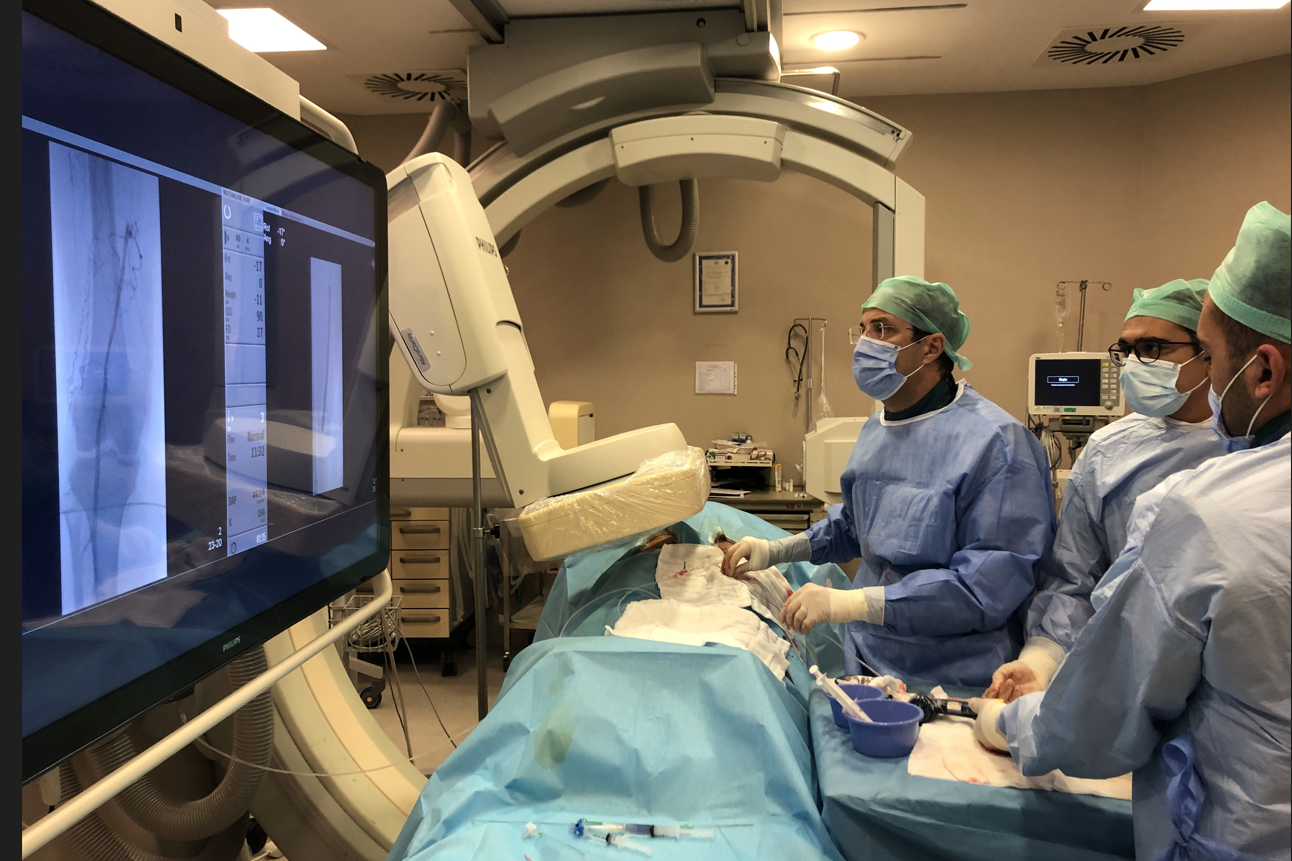Stating that embolization treatments are a type of treatment performed by the Interventional Radiology department using angiography (angiography for short), Prof. Dr. Levent Oğuzkurt, Chairman of the Turkish Society of Interventional Radiology Dr. Levent Oğuzkurt informs about how the treatments are applied.

“Interventional Radiology is the youngest branch of medicine and has a history of 60 years. Embolization literally means closing the vessel by blocking it via angiography. It is the non-surgical angiography method of a treatment that has usually been done surgically before. If embolization is applied to a normally functioning vein, it may damage the organ fed by that vein. For example, you cannot close the renal vein with embolization, because the kidney cannot be fed, loses its vitality and cannot function at all.”
“The patient’s life can be saved”
Recording that embolization was first used 50 years ago to stop bleeding in patients with internal bleeding, Oğuzkurt continued as follows:
“For decades or even centuries before embolization, when there was internal bleeding, either nothing could be done or an attempt was made to find the bleeding vessel and close it surgically. However, it may not always be easy to find a bleeding vein during surgery. For example, a bleeding vessel in the liver
However, it may be very difficult for the surgeon to find and ligate this vein during surgery. However, if you proceed through the vein, we can find the bleeding much more easily, block that part of the vein, stop the bleeding and save the patient’s life.”
“It plays an important role in cancer treatments”
Pointing out that embolization, which was first performed to stop bleeding, began to be used in a much wider group of diseases over time, Oğuzkurt said, “The most important area of use was embolization to prevent liver cancer from feeding. At first, the aim was to destroy the cancer by simply blocking the blood vessel to disrupt the nutrition of the cancerous tissue, but later, while doing this blockage, cancer drugs began to be administered into the tumor. This procedure performed in liver cancer is called chemoembolization (embolization where chemotherapy drug is also given). A newer form of this is radioembolization, which is the delivery of microparticles that emit radiation to the liver cancer. These treatments are currently used in some types of liver cancer and have a very important place in today’s modern cancer treatment, but it would not be difficult to predict that they will be used in different types of cancer in the future.”
“It is also beneficial in the treatment of aneurysms”
Indicating that another benefit of embolization is the treatment of vascular ballooning (aneurysm), Prof.Dr. Levent Oğuzkurt said,
“Aneurysm is a ballooning of a vessel due to any reason, and when it grows large enough, it may bleed and pose a life-threatening risk. Today, most aneurysms, including brain aneurysms, are treated via angiography. Embolization is also used to shrink some benign tumors that are not cancerous but cause discomfort, and even to shrink some organs that grow and cause problems. One of the most commonly performed procedures today is myoma embolization, which is performed for the treatment of benign uterine myomas, which are very common in women. Myomas, whose nutrition is cut off by the embolization process, shrink rapidly and sometimes disappear completely. Prostate vein embolization has very successful results for prostate enlargement, which has been very common in older men in the last 15 years, and the urinary difficulties it causes. The problems experienced by the patient due to prostate enlargement are entirely dependent on the enlargement of the prostate. The prostate, whose nutrition is reduced by the embolization process, shrinks rapidly and the complaints it causes disappear. Varicose veins around the uterus (pelvic congestion syndrome) that cause abdominal pain in women or varicose veins around the ovaries (varicocele) in men can also be treated with the embolization method.”
“The usage areas of embolization therapy are expanding”
Stating that embolization treatment has started to be used in many different areas recently, Oğuzkurt said, “For example, in cases of knee arthritis at an advanced age, the blockage of the vessels that cause inflammation in the knee seriously reduces or eliminates knee inflammation and pain. In case of hemorrhoids or hemorrhoids, hemorrhoids are treated by blocking the veins that feed them. Goiter nodules can be reduced in size by preventing the nutrition of large nodules formed in the thyroid gland in goiter. In recent years, with the treatment called hypogastric embolization, the person can lose weight by blocking the vessels leading to the hunger center of the stomach in order to prevent obesity. These embolization treatments may not be suitable for every patient or may not provide absolute results in every patient. However, embolization treatments performed with appropriate patient selection continue to touch our diseases and our lives by being performed non-surgically using the angiography method in many diseases that were previously treated with surgery.”
“Embolization and other important issues will be discussed at the congress”
“2024 TGRD 19th Annual Meeting” organized by the Turkish Society of Interventional Radiology (TGRD) will be held on 2-6 February 2024 at Antalya-Belek. In addition to the developments in embolization treatments, the latest innovations and applications in interventional radiology, new literature information and auxiliary topics will be shared with the relevant physicians in this scientific meeting. the Turkish Society of Interventional Radiology administrators and scientists from different countries will also attend the congress.



